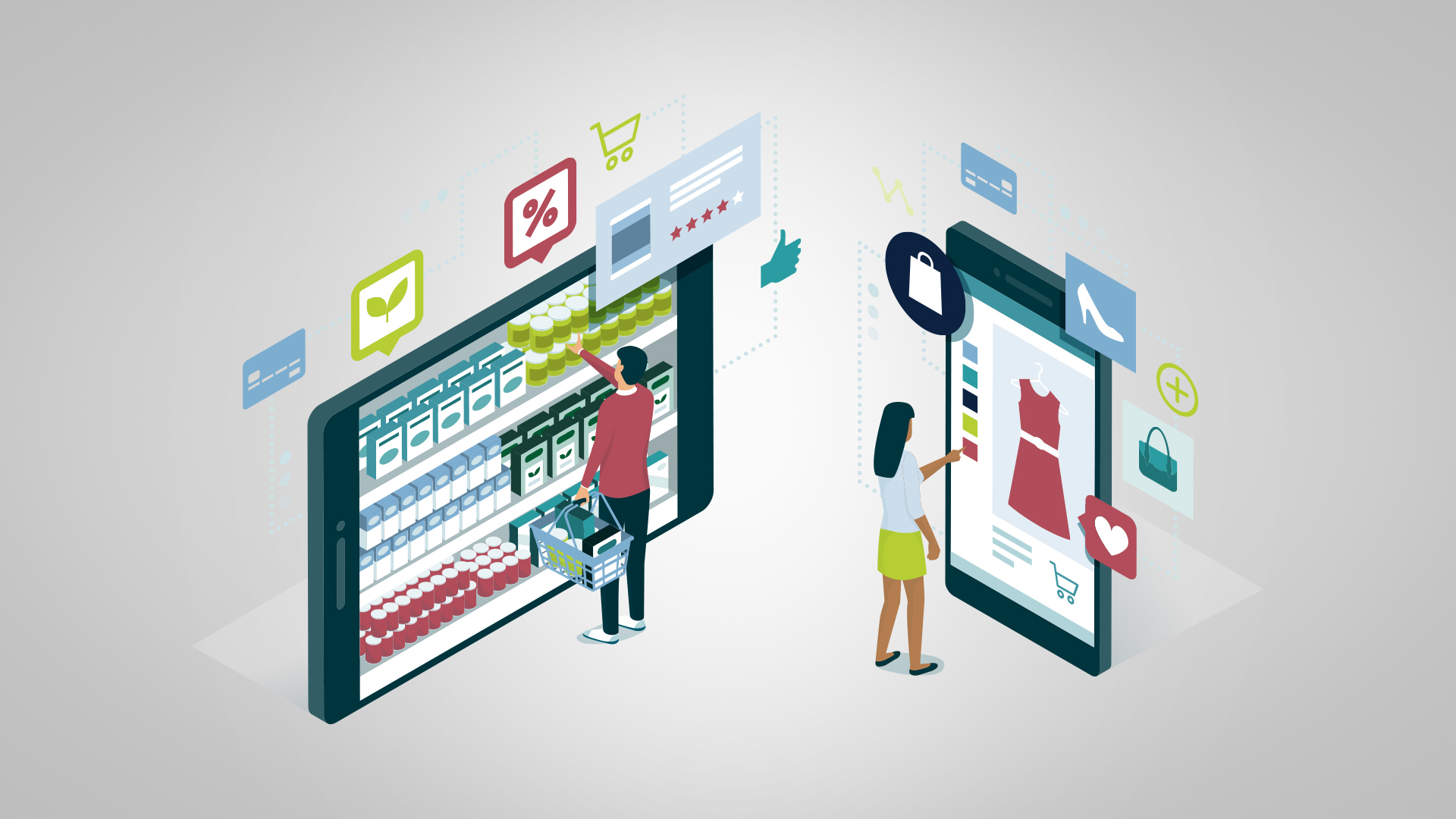
Retailer-Ready: Transforming Consumer CPG Messaging for Buyers and Distributors
For consumer-packaged goods (CPG) brands, creating consumer demand is vital. But while many marketers know that it isn’t the whole solution, we find some B2B efforts as an area of opportunity to improve. Yes, without buy-in from retailers and distributors, even the most beloved products won’t achieve the ultimate goal of dedicated shelf space. Consumer demand creates pull, but it requires buyer access to turn that pull into sales.
To succeed in the retail landscape, brands need to pay more attention to strategically connecting these two worlds by aligning emotional appeal that drives shoppers with the rational value that convinces retail buyers. This edition of Plain Talk explores how to punch up your B2B messaging and strategy, so it resonates with buyers and turns more impactful consumer campaigns.
KEY TAKEAWAYS
- Consumer demand alone can’t drive success; brands need to link shopper appeal with retailer value to secure sales.
- Emotional messaging aimed at consumers doesn’t resonate with trade audiences that rely on data and proof of performance.
- Building an effective B2B strategy requires investment and alignment between marketing and retail objectives.
- Trade marketing should focus on credible outreach that proves the brand’s value to retail buyers.
- B2B communication must turn consumer benefits into measurable outcomes for retailers using clear evidence.
- Clear messaging helps accelerate distribution and build lasting partnerships.
Why Consumer-Focused Messaging Falls Short in Trade Contexts
Consumer campaigns often lead with emotion, such as lifestyle storytelling, to create interest with shoppers. But retail buyers and distributors operate differently. Their focus is on measurable results:
- Category growth and differentiation
- Profitability and margin reliability
- Operational ease and supply dependability
- Shopper data that validates consumer demand
When CPG brands try to extend the consumer messaging into trade use, they often lose impact and are more likely to cause confusion with buyers. An iconic tagline like Maxwell House’s “Good to the last drop” may inspire a shopper in the aisle, but buyers are looking for why the product will grow its category and sell faster than what’s on shelves now.
Emotion alone doesn’t earn shelf space. You need to show clear, evidence-backed value in a compelling way.
Defining a Strong B2B CPG Marketing Strategy
For many brands, B2B communication has been treated for too long as an afterthought or a lesser value than outreach to consumers. Team members are tasked with developing a quick sales deck or trade show booth message utilizing existing assets. Twenty twenty-fives’s retail buyers are inundated with product innovations and are more insights-driven than ever, so your efforts should be thoughtful.
A strong B2B messaging strategy should be viewed as a core investment for growth. That means dedicating:
- Budget for trade marketing, not just consumer media
- Trained staff who understand retail buyer psychology
- Integrated strategy connecting consumer demand with retail value
From a buyer’s perspective, success looks like confidence. Carrying a product should reliably grow, attract new shoppers, and be profitable.
The most strategic brands achieve this through a balanced B2B mix of channels:
- Trade media for credibility and thought leadership opportunities
- Messaging campaigns targeting the right retail decision-makers
- Trade show activations that tell a concise and impactful business story
- Sales materials that align marketing validation with retail data
The B2B Messaging Makeover Framework: Turning Consumer Appeal into Retail Value
Refining B2B messaging begins with a clear audit of your current trade materials. Review every sell sheet, pitch deck, and trade event graphic with one guiding question: “Does this clearly show how we help the retailer succeed?”
Here’s a framework for transformation:
1. Audit for clarity and relevance
Edit out jargon or vague claims and replace brand story with a business story. It should speak to measurable results and consistency.
2. Translate shopper benefits into retailer outcomes
Instead of saying, “Consumers love our snacks,” reframe it to, “Our snacks attract X and grow the snack category by X% in comparable markets.”
3. Simplify and sharpen language
Trade messaging should be concise and fact-based. Avoid slogans. Lead with data and growth rates that matter to buyers.
4. Use proof points as credibility drivers
Include evidence like:
- Category or market share growth
- Consumer insights and velocity data
- Supply chain dependability
- Cross-promotion and media support that drives in-store lift
5. Align B2B and consumer stories
A cohesive narrative reinforces credibility. If your consumer campaign emphasizes sustainability, your trade story should quantify how that positioning attracts new shoppers or satisfies retailer ESG priorities.
Review resources such as McKinsey’s eB2B opportunity in CPG to see how digital transformation is shaping buyer expectations.
The Payoff: Clear Messaging Drives Growth
When trade messaging becomes buyer-ready, the results go beyond better sales presentations. Clear communication creates momentum across the entire value chain.
Accelerated distribution and promotions
Buyers respond faster when they instantly understand your category value, margin potential, and marketing support. Compelling trade decks shorten the time between interest and shelf placement.
Stronger buyer and distributor relationships
Retailers view transparent, insight-driven brands as strategic partners rather than sales pitches. This trust often translates into better promotional placement and long-term collaboration.
Internal alignment across teams
When sales, marketing, and leadership share a unified trade story, everyone operates with clarity. Sales can pitch confidently, marketing can craft support content that resonates, and leadership can track performance with shared metrics.
Buyers as the “first customer”
In an omnichannel environment, it’s easy to forget that before a consumer can choose your product, a buyer must. Retail buyers are effectively your first customers. They determine whether shoppers even get a chance to connect with your brand.
Clarity is the gateway to shelf space
Generating consumer demand is exciting, but without retail access, what’s the point? Now is the time for CPG brands to audit and elevate their trade-facing messaging and materials. Even small shifts, such as adding proof points and aligning with buyer priorities, can dramatically change how your brand is perceived in the boardroom and on the shelf.
Is your B2B messaging ready for retail buyers? Let’s work on it together, so your brand gets the space it deserves.
B2B CPG Messaging FAQs
Buyers prioritize category growth potential, profit margins, shopper appeal backed by data, and operational dependability. Messaging should make it clear how your brand helps them achieve these goals.
Focus on evidence of consumer demand, a strong promotional plan, and a clear differentiation story. Provide sell-in materials that connect consumer excitement to retail results.
Update trade messaging whenever major consumer campaigns, product launches, or retailer partnerships evolve. Regular updates keep messaging relevant and aligned with market shifts.
Our Articles Delivered
Signup to receive our latest articles right in your inbox.


